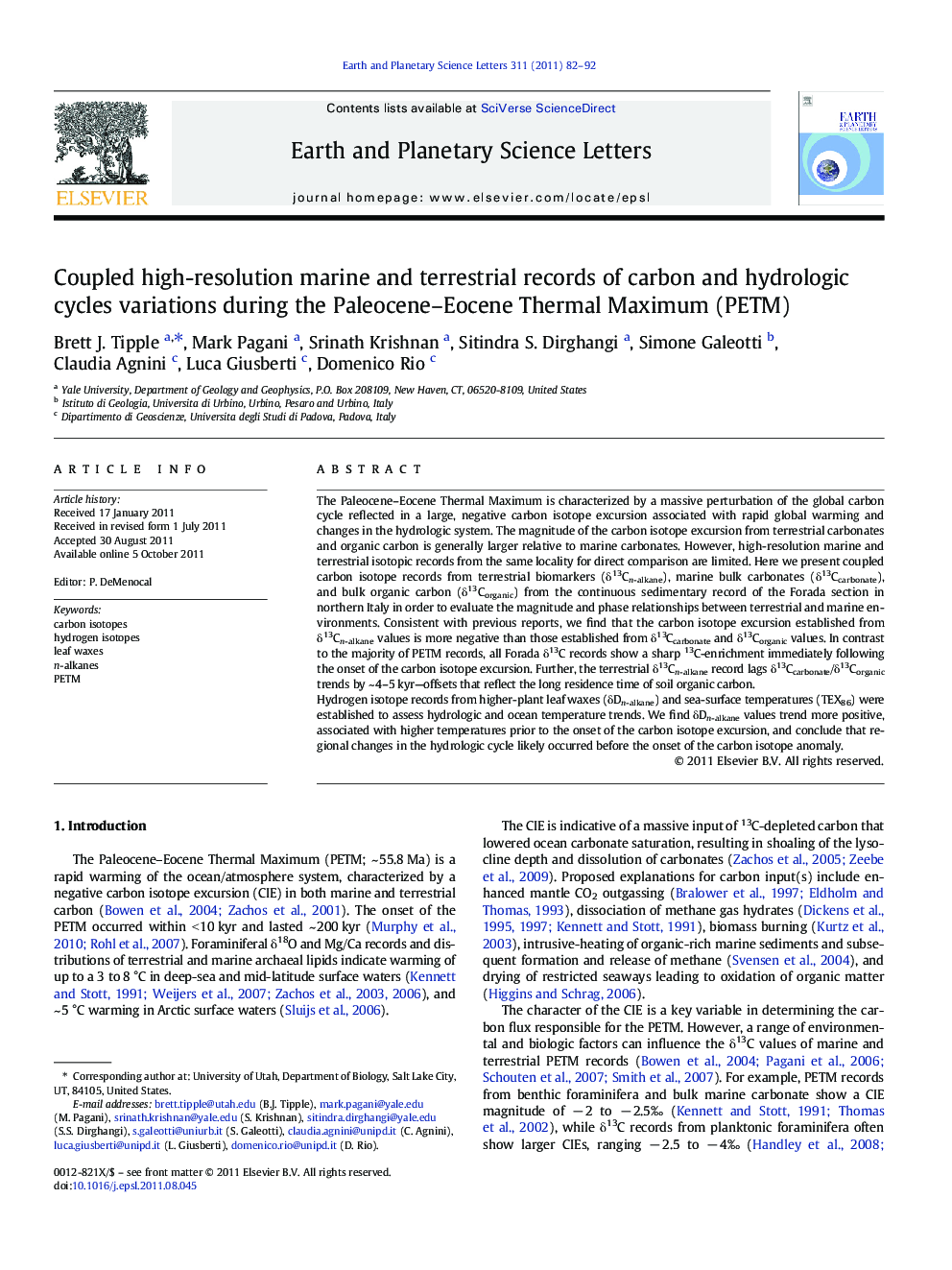| Article ID | Journal | Published Year | Pages | File Type |
|---|---|---|---|---|
| 4677682 | Earth and Planetary Science Letters | 2011 | 11 Pages |
The Paleocene–Eocene Thermal Maximum is characterized by a massive perturbation of the global carbon cycle reflected in a large, negative carbon isotope excursion associated with rapid global warming and changes in the hydrologic system. The magnitude of the carbon isotope excursion from terrestrial carbonates and organic carbon is generally larger relative to marine carbonates. However, high-resolution marine and terrestrial isotopic records from the same locality for direct comparison are limited. Here we present coupled carbon isotope records from terrestrial biomarkers (δ13Cn-alkane), marine bulk carbonates (δ13Ccarbonate), and bulk organic carbon (δ13Corganic) from the continuous sedimentary record of the Forada section in northern Italy in order to evaluate the magnitude and phase relationships between terrestrial and marine environments. Consistent with previous reports, we find that the carbon isotope excursion established from δ13Cn-alkane values is more negative than those established from δ13Ccarbonate and δ13Corganic values. In contrast to the majority of PETM records, all Forada δ13C records show a sharp 13C-enrichment immediately following the onset of the carbon isotope excursion. Further, the terrestrial δ13Cn-alkane record lags δ13Ccarbonate/δ13Corganic trends by ~ 4–5 kyr—offsets that reflect the long residence time of soil organic carbon.Hydrogen isotope records from higher-plant leaf waxes (δDn-alkane) and sea-surface temperatures (TEX86) were established to assess hydrologic and ocean temperature trends. We find δDn-alkane values trend more positive, associated with higher temperatures prior to the onset of the carbon isotope excursion, and conclude that regional changes in the hydrologic cycle likely occurred before the onset of the carbon isotope anomaly.
► Coupled terrestrial and marine δ13C records were recovered across the PETM. ► Isotope records suggest the leaf wax CIE lagged the marine excursions by ~ 5 kyr. ► δD and temperature records suggest climatic variations prior to the CIE.
